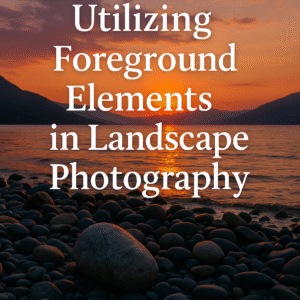 A great landscape photograph is more than just a beautiful scene—it tells a story. It evokes emotion, invites exploration, and often leaves a lasting impression. But how exactly do you move from merely capturing a scene to composing an image that speaks to the viewer?
A great landscape photograph is more than just a beautiful scene—it tells a story. It evokes emotion, invites exploration, and often leaves a lasting impression. But how exactly do you move from merely capturing a scene to composing an image that speaks to the viewer?
In this article, we’ll dive into how you can compose your landscape shots in a way that draws the eye, engages the imagination, and tells a story worth remembering.
1. Start With a Clear Subject or Focal Point
Every compelling story has a main character—and every effective landscape photo should have a clear subject.
Examples of Focal Points:
- A solitary tree
- A winding trail
- A mountain peak
- A reflective lake
Tip: Ask yourself: What’s the one thing I want the viewer to notice first? Frame your composition around that.
2. Use Foreground, Midground, and Background
Think of your photo as having layers—just like a well-written story. These layers add depth and help guide the viewer’s eye through the frame.
- Foreground adds interest and draws the viewer in
- Midground anchors the subject
- Background provides context and atmosphere
Example: A flower-filled field (foreground) leading to a cabin (midground) with mountains in the distance (background)
3. Incorporate Leading Lines
Leading lines naturally guide the viewer’s gaze through the image. They create flow and momentum, much like plot lines in a story.
Examples:
- Trails, rivers, fences
- Shadows or light rays
- Tree lines or ridges
Use them to draw attention to your subject or lead the eye on a visual journey.
4. Frame Your Shot Thoughtfully
Framing is about what you include—and just as importantly, what you exclude. Compose your image to:
- Eliminate distractions
- Focus attention
- Set the tone
Use natural frames like arching branches, cave openings, or rock formations to create a window into your landscape.
5. Capture a Moment in Time
The best landscape photos feel alive. Capture:
- Shifting clouds
- A break in the storm
- The golden moment before the sun dips below the horizon
These fleeting moments give your photo narrative weight and a sense of timing.
6. Use Light and Shadow for Mood
Just like lighting sets the tone in movies, natural light helps you convey emotion in photos.
- Soft light = peaceful, romantic
- Harsh light = energetic, intense
- Low light = mysterious, dramatic
Think about how the light contributes to your story and adjust your exposure accordingly.
7. Consider the Weather and Atmosphere
Fog, rain, wind, snow—these are storytellers in their own right. A stormy sky can convey tension. Mist can create mystery. A rainbow after the rain brings a sense of hope or wonder.
Plan your outings around weather patterns for maximum visual impact.
8. Edit With Intent
Post-processing is your chance to reinforce your story. Use editing to:
- Boost color for vibrance and emotion
- Enhance contrast to add drama
- Apply vignettes to draw the eye to the center
Don’t overdo it—aim for enhancements that elevate your narrative, not distract from it.
Final Thoughts
The most memorable landscape photographs do more than document a scene—they tell a visual story that captures the viewer’s imagination.
When you compose your next shot, think like a storyteller. Who’s the main character? What journey are they on? What mood are you trying to convey?
Once you start thinking in stories, your landscape photos will start speaking volumes.
Happy storytelling through the lens!
